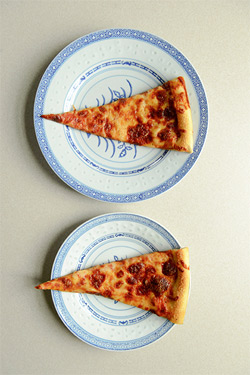
“It has been assumed that overweight or obese consumers are more likely than others to underestimate the size of a food serving and accordingly overeat–particularly when the food is presented on a large dinner plate or in a large container,” says psychiatry professor Lance Bauer. “For this reason and others, it is frequently recommended that these consumers use smaller plates to defeat the illusion.”
But when Bauer and UConn Health Alcohol Research Center colleagues Victor Hesselbrock and Dr. Jonathan Covault tested teen girls’ attentiveness and quizzed them about their perception of a constant portion size relative to varying plate sizes, they found a surprising result.
“The study found that, on average, overweight or obese adolescent girls were less attentive than normal weight girls to visual cues of different types,” Bauer says. “This finding suggests that changing the size of their dinnerware may be less effective than we thought. It also suggests that presenting them with detailed charts summarizing diet rules or calorie counts might also be less effective than we would like.”
Bauer just presented his group’s findings at the annual scientific meeting of American Psychosomatic Society in Savannah, Ga. The study involved 162 girls ages 14 to 18 in the Greater Hartford area, categorized by body mass.
“The study’s results imply that diet education for overweight or obese adolescents should be clear, simple, repeated, and interesting,” Bauer says. “The next step might involve incorporating information about an overweight or obese child’s cognitive abilities in his or her weight loss treatment. In diet education, one size might not fit all.”
